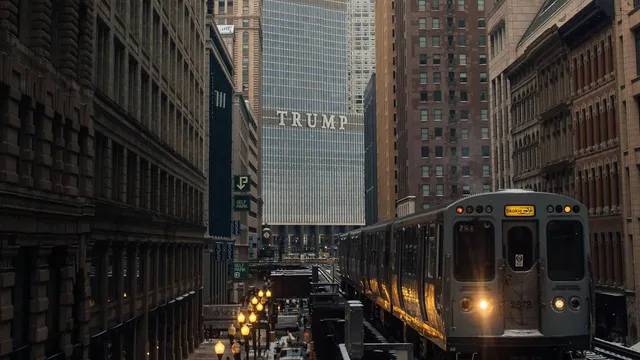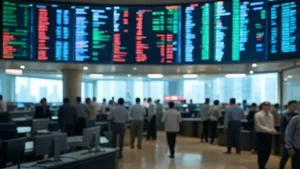Chamath Palihapitiya explains the strategic theory behind new trade policies designed to reshape the global economic order
As financial markets continue to react to President Trump’s sweeping tariffs, one prominent Silicon Valley voice has emerged as an unlikely supporter.
Chamath Palihapitiya,1 venture capitalist and political megadonor who has contributed to both Democrat and Republican campaigns, believes the tariffs are designed to correct what he sees as decades of trade imbalances that have gutted American manufacturing.
“What has happened over the last 25 years is we have hollowed out an enormous part of the middle class economy in the United States,” Mr. Palihapitiya said in a recent interview on the Flagrant podcast.2 “We’ve explained it away, saying, ‘Hey we don’t want to do that kind of work!’”
But beyond addressing these imbalances, Mr. Palihapitiya views the tariffs as a calculated strategy — a form of economic pressure designed to bring trading partners to the negotiation table and strike more favorable terms for the United States.
The Global Trade Imbalance
According to Mr. Palihapitiya, the problems began around 2001, when China joined the World Trade Organization. This allowed American corporations to engage in what he describes as “an enormous form of arbitrage” — shifting production overseas to take advantage of cheaper labor while maintaining access to American consumers.
The venture capitalist argues this created a fundamentally unbalanced relationship where American products often face significant tariffs when exported to other countries, while foreign goods enter the U.S. with minimal taxation. In his view, it’s a setup that’s benefitted just a small slice of American corporations and stakeholders, but made at the expense of the entire country’s manufacturing capacity.
A One-Time Shock, Not Inflation
While critics warn that tariffs will function as a tax on American consumers, Mr. Palihapitiya draws a distinction between inflation and what he calls a “price shock.”
“If [shoes have] a 10% tariff on it, it goes from $100 to $110 one time,” he explained. Unlike inflation, which compounds year after year, tariffs represent a one-time adjustment in prices.
Trump’s approach, according to Mr. Palihapitiya, involves using tariff revenue3 — estimated between $250 billion and $750 billion annually — to potentially eliminate federal income taxes for Americans earning less than $150,000 annually. This would effectively shift the tax burden (including increased costs) from American workers to foreign producers.
National Security and Self-Reliance
Behind the trade calculations lies a deeper concern about national security and supply chain resilience. Mr. Palihapitiya points to critical technologies like electric motors, batteries, and computer chips, where American dependence on foreign suppliers — particularly China — creates strategic vulnerabilities.
“America is totally unprepared to fend for herself,” Mr. Palihapitiya said. “If push came to shove, we can’t make things here anymore.”
He cites examples ranging from rare earth minerals essential for electric motors, to specialized batteries for energy storage, where Chinese manufacturers dominate global production.
“If something bad were to happen, there’s like a lot of really bad outcomes where we cannot fend for ourselves,” he said. “We can’t make the vaccines we need; we can’t make the technological equipment we need.”
Market Volatility as Leverage
The recent stock market turbulence following the tariff announcements has rattled investors, but Mr. Palihapitiya suggests this volatility is strategic. The flight to safety in bond markets has pushed down U.S. Treasury yields, potentially saving “hundreds and hundreds of billions of dollars” as the government refinances approximately $9 trillion4 in debt this year.
Additionally, this financial pressure, he argues, gives the administration leverage in negotiating new trade relationships. “It’s like a bank account that compounds every day,” Mr. Palihapitiya said of Trump’s waiting strategy. “Is it complicated for America? Yes. Is it complicated for the stock market? Yes. Is it more complicated for everybody else? Double yes!” Specifically, Mr. Palihapitiya emphasizes that American consumers are “first among equals” — a consumption machine unlike any other, able to purchase massive quantities from any supplier, and yet, for suppliers, there is no substitute for the American market.
A Strategic Game of Economic Pressure
Mr. Palihapitiya describes Trump’s approach as “straight-up game theory” designed to maximize leverage in negotiations with trading partners.
“In game theory, there’s this concept called regret minimization,” he explained. “When you’re going into a high stakes negotiation — how do you create the right psychological parameters in your opponent?”
The strategy, as he understands it, involves three distinct phases. First, apply broad tariffs that create deliberate economic pressure, including on small countries that might otherwise serve as tariff-dodging “weigh stations.” 5 This initial discomfort brings countries to the negotiating table.
Second, use America’s consumer market as leverage — what he calls “330 million Americans who are absolute kingmakers” — to negotiate better terms. “There is no country in the world that can buy stuff the way Americans buy [stuff],” 6 he noted.
Finally, establish what he envisions as (potentially) the “Mar-a-Lago Accords” — a new global trading alliance with revised rules where countries “pay their proportional share” for access to American consumers.
This would be like a “NATO for global trade,” Mr. Palihapitiya suggests. “The real protection [from future global military conflict] is economic cooperation: Aligned interests.”
Proportional, Not Zero-Tariffs
Importantly, Mr. Palihapitiya doesn’t envision a world where all tariffs disappear. Rather, he describes a more “proportional” system where different countries might have different relationships with the United States based on strategic considerations.
“Some countries may be so strategically important, we’re going to run deficits with them,” he explained. “Some other countries where maybe we don’t get as much from them as we have historically, we should run a surplus.”
This nuanced approach would give the Trump administration flexibility to maintain trade deficits of strategic value, while adjusting relationships elsewhere. The goal isn’t eliminating all tariffs, but creating a system that benefits American workers while maintaining strategic flexibility.
Criticisms and Risks
Critics point to potential risks if market uncertainty freezes investment capital or triggers a recession. Mr. Palihapitiya acknowledges these concerns, noting that economic “malaise” could hinder the growth necessary to address America’s long-term debt challenges.
“Growth requires investment,” he said. And market uncertainty stemming from Trump’s tariff policies increases investment risks, potentially leading investors to go “risk-off.”
But as market participants and global leaders adjust to these new economic realities, Mr. Palihapitiya believes the outcome depends on whether countries recognize America’s consumer power and negotiate new trade relationships.
“I think everybody wants to get a deal done,” he said. Then, addressing those questioning the value of extreme economic disruption: “If you’re happy with the status quo, I get it. But if the status quo isn’t working for you, maybe it’s time to try something different and let it play out.”
References
- Chamath Palihapitiya is a bona fide political insider with direct access to the White House: https://www.rollingstone.com/politics/politics-news/trump-donor-chamath-palihapitiya-brags-access-white-house-1235315702/
- Flagrant podcast: https://open.spotify.com/show/0VjIStA3iUPJCqtiTSRhVY
- There is some evidence Trump’s tariffs can raise significant revenues: https://taxfoundation.org/research/all/federal/trump-tariffs-trade-war/
- Financial commentary platform, The Kobeissi Letter, reveals $9.2 Trillion in US debt will mature or need to be refinanced in 2025: https://finbold.com/9-trillion-of-us-debt-will-mature-in-2025-should-investors-be-worried/
- To stop tariff dodgers from sneaking goods through third countries, the Trump administration slapped tariffs on all nations — cutting off the common tactic of repackaging exports to sidestep U.S. trade rules; i.e., tariff “Whac-A-Mole”: https://www.npr.org/2025/03/07/nx-s1-5318785/tariff-dodging-companies-exemptions-engineering
- World Bank data confirm U.S. households consume more than any other: https://data.worldbank.org/indicator/NE.CON.PRVT.CD?end=2023&most_recent_value_desc=2023&start=1960
This article accurately represents the views of Chamath Palihapitiya and does not constitute an endorsement of these perspectives by Blockchainsure.





